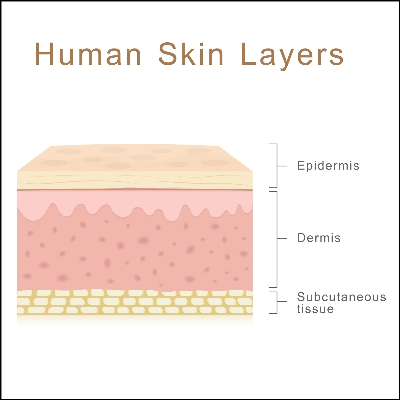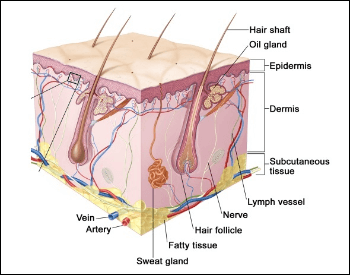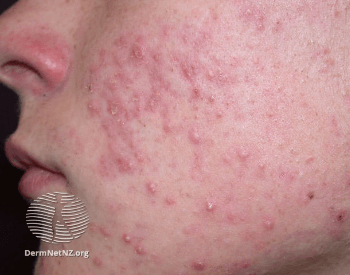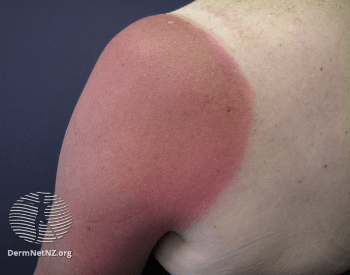
- Organ Name: Skin
- Organ Location: Entire body
- Organ System: Integumentary system
- Organ Purpose: Protect the body from pathogens and regulate tempature
- Organ Weight: About 15% of body weight
- Organ Volume: 21.5 square feet
21 Skin Facts for Kids
- Skin is the soft outer tissue of the human body and is part of the integumentary system.
- Skin is an organ and is the largest organ in the human body.
- Skin performs many tasks for the human body. It helps regulate body temperature, protects the body from pathogens and protects the body from damage by detecting extreme temperatures and identifying pain.
- Human skin can regenerate itself and a new layer is replaced every 28 to 30 days.
- Human skin has three main layers and they are the epidermis, the dermis and the hypodermis.
- The epidermis is the visible part of your skin and the outermost layer and it helps protect the human body from pathogens and regulates the release of water.
- The dermis is the layer of skin underneath the epidermis and helps support the epidermis. The dermis contains nerve endings, sweat glands, hair follicles and blood vessels.
- The hypodermis is the layer of skin underneath the dermis and is what connects your skin to bones and muscles.
- The color of skin is determined by the amount of melanin produced. Heavy production of melanin will produce darker colored skin, while lighter production of melanin will produce light colored skin.
- Skin can repair itself, but if the damage is severe enough scar tissue will develop.
- Scar tissue is repaired skin that is discolored and has no sweat glands or hair follicles.
- An average adult human has around 21.5 square feet of skin.
- About 15% of the body weight of an average adult human is skin.
- The thickest skin on the human body is the palms and the bottom of the feet and is around 1.5 millimeters thick.
- The thinnest skin on the human body is around the eyes and the eyelids and is only 0.2 millimeters thick.
- Human skin is home to millions of beneficial bacteria known as skin microbiota.
- Sunburn is a type of skin burn that us caused from radiation from the sun.
- Skin damaged from ultraviolet radiation (sunburn) can increase the risk of three types of skin cancer.
- Sunblock, also known as sunscreen, is a topical product used to protect your skin from ultraviolet radiation (UV).
- The study of skin is called dermatology and a person who studies dermatology is called a dermatologist.
- A common myth is most of the dust in a home is made up of dead human skin cells. The truth is very little of the dust in your home is dead human skin cells.
Human Skin Pictures

A diagram of the many different layers of skin.Credit: Terese Winslow

A picture of a human face with acne vulgaris.Credit: DermNet NZ

A picture of human skin that has bad sunburn.Credit: DermNet NZ
Additional Resources on the Human Skin
- The Anatomy of Human Skin – View the anatomy of human skin on the National Cancer Institute website.
- Skin Disorders and Diseases – A list of diseases, disorders and conditions that affect the human skin.
- Human Skin – Britannica – Discover more fun human skill facts on the Britannica website.
- Human Skin – Wikipedia – Learn about human skin and the Wikipedia website.
